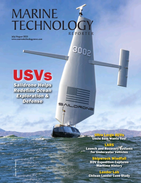
Can Underwater Sound Signals Solve Aviation’s Greatest Mystery?
. We also examined data for signals along MH370’s initial flight path but found no corresponding acoustic signatures.With only a handful number of past aeroplane incidents, our findings are not conclusive. But a 200-tonne aircraft crashing at a speed of 200 metres per second would release the kinetic energy equivalent to a small earthquake. It would be large enough to be recorded by hydrophones thousands of kilometres away.Given the sensitivity of the hydrophones, it’s highly unlikely that a large aircraft impacting the ocean surface wouldn’t leave a detectable pressure signature, particularl
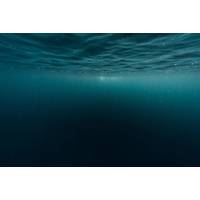
New Thermal Buoyancy Engine Design Proposed for Underwater Gliders
capacity that could therefore provide a large driving force for the glider.This was achieved by fully using the pressure that the engine's phase change material can generate. This amplified the ballast capacity of the glider without increasing the mass of phase change material so it provided more kinetic energy to the glider’s rear-mounted foldable turbine.The researchers explain: “When the glider is in power-generation mode, the thermal buoyancy engine uses the thermal energy to change its buoyancy and drive the glider vertically with the assistance of an attitude adjustment unit. During

Ecosse IP Launches New Renewable Energy Tech
MOWT model can generate between 5-10kW in 1m/s flow to power subsea assets. Large-scale MOWT will have a power output of several megawatts.There are many applications for MOWT including powering subsea assets, as an alternative to tidal barrages and supplying energy to communities by harnessing kinetic energy from slow-moving water. The MOWT technology can be applied to offshore energy, renewables, utilities, aquaculture, marine and defense sectors

Designing for Ice with Ian Jordaan
there are no icebergs at all in a given area, some years there are many. The other hazard is calving. You get small icebergs and bergy bits, accelerated by waves. (A bergy bit is glacier ice, 1 to 5 meters above sea level and 5 to 15 meters long.) Wave-induced motions increase the kinetic energy in impacts against a floating structure. It’s harder to detect icebergs in a high sea state, which is an issue for floating structures. High sea states are associated with wind and rain. Waves can accelerate an ice piece, and there’s a decreased chance of detecting it. The joint probabilit
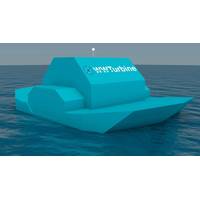
The Switch to Deliver Full-Power Converter for Floating Power Plant
Vancouver-based Water Wall Turbine Inc. (WWT) has selected The Switch to provide a 500 kW full-power converter for its self-floating power plant. This new system extracts potential and kinetic energy from large, fast moving water currents for conversion into electric energy. The Switch will supply its first 500 kW full-power converter in October 2014 for WWT’s prototype project, which will be used for the Dent Island Resort, near Vancouver Island off the west coast of British Columbia, Canada. System testing of the integrated equipment is planned for the first quarter of 2015. The vessel
Shock Absorbtion System Adds to N. Sea Platform Safety
supplies from ships to the platform, containers (some weighing as much as 8,000 kg) move toward the Gudron Platform at speeds of up to 3 m/sec. The ITT-Servi Hydranor system, part of a barrier engineered by Aibel AS for the Gudrun Platform, includes highly tuned dampers that absorb the cargo’s kinetic energy. “Moving equipment from a supply ship onto an offshore platform in difficult conditions requires a highly engineered system of shocks and dampers,” said Tomm Kuran, sales manager for Pneumatics at Servi Hydranor AS. “The Gudrun’s crane operators are moving food as well
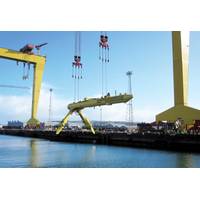
MacArtney Swivel Solution for Scotrenewables Tidal Turbine
will reach a rated power of 2 MW, making it one of the most powerful tidal turbines in the world to date. Like with the SR250, the main structure of the SR2000 comprises a floating cylindrical tube to which dual horizontal axis rotors are attached on retractable arms. The rotors extract the kinetic energy of the tidal flow, which is converted to electricity though a power take-off system for export to shore. Realizing the importance of the mooring system as a critical underpinning technology for successful floating marine energy converters, SRTP has developed an innovative and unique single
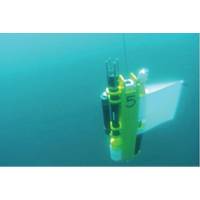
Turbulence Microstructure Measurements from a Wave Powered Profiler
and time. The smooth, “free rising” mode of operation of the WW makes it a suitable platform for the measurement of small-scale turbulence. A collaborative attempt between SIO and Rockland Scientific Inc. (RSI) to gather estimates of microstructure and the dissipation of turbulent kinetic energy was carried out in the summer of 2012 using a WW and an RSI MicroRider turbulence payload package. The WW platform provided a unique opportunity for RSI to test the performance of the MR over fast and repetitious autonomous profiles in a single location, observing the time evolution of turbulence

Renewable Energy: Security for Nations Dependent on Imports
power supply. Some island nations in the tropics have an abundance of sun and also tidal and ocean currents nearby from which energy can be harvested, which can contribute to a diversified energy mix. Tidal and ocean currents are highly rich in energy; a water current of 1.5m/s contains as much kinetic energy as a wind blowing 40m/s. Let us look at an example: South Korea has a vulnerable energy system and imports 85% of its energy, much of it coal and uranium. Recent events in South Korea stress the urge to increase the country’s security of energy supply; In August, two power plants malfunctione
 August 2025
August 2025


